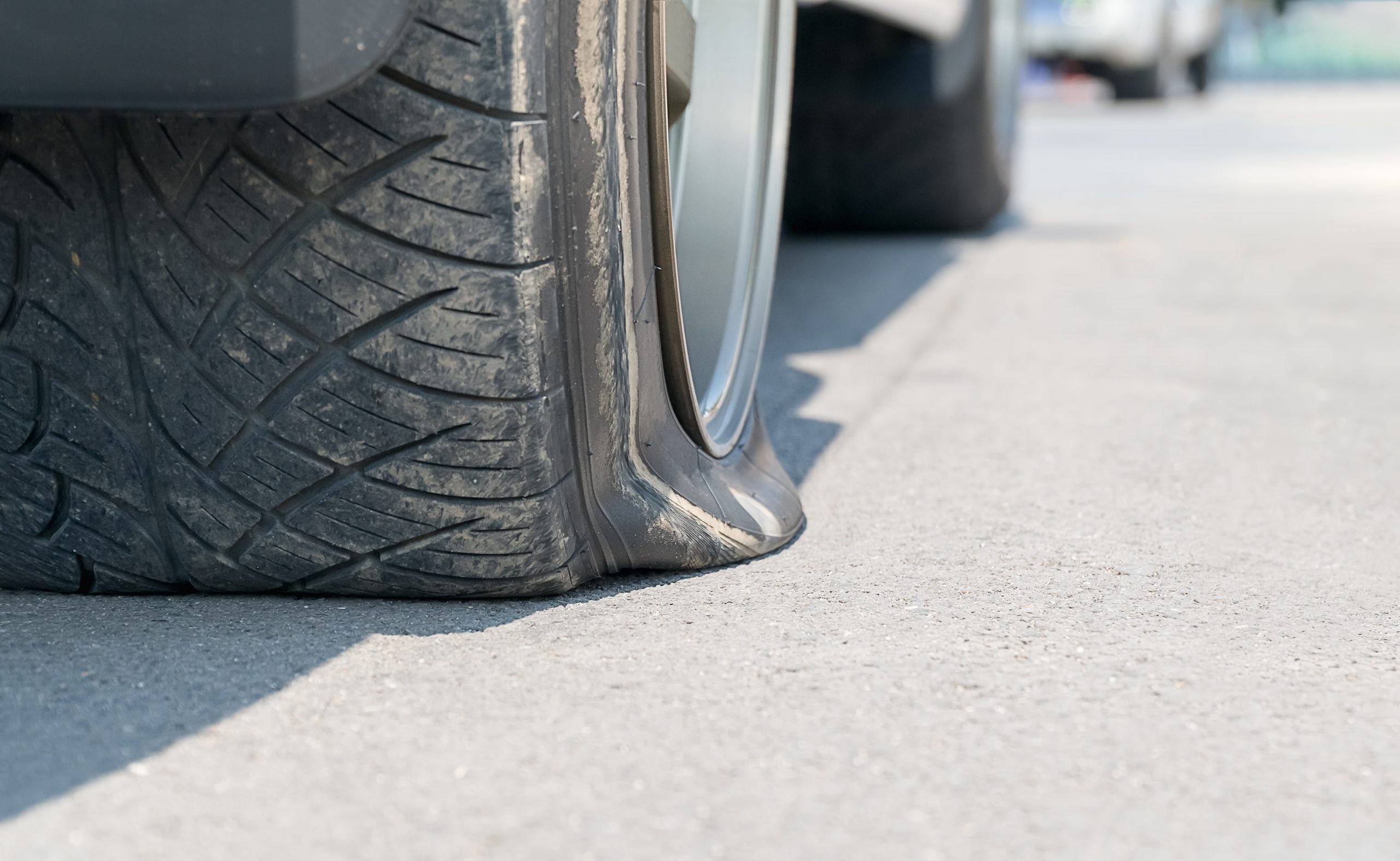A flat tire can be a scary situation, especially if you’re out in the middle of nowhere or on the highway. However, it’s important to stay calm and deal with the situation as best you can. Do not attempt to drive home or to a repair shop on your flat tire. This can do some serious damage to your tire or even the wheel itself. If you don’t have a spare tire on you, contact a loved one nearby or a roadside assistance program. What may seem like an extra step will save you a lot of money and frustration in the end.
While a flat tire can be dangerous and scary, but it can also be fixed. Many flat tires are caused by a small puncture that can be repaired. Regardless, you’ll need that spare to get your car to a safe place. Here’s what you should do if you get a flat tire while out on the road.
Keep an Eye Out for Other Drivers
You’re changing a tire on the side of the road or in a parking lot, so be aware of the other cars around you. If you’re on the side of the road, pull as far off the road as you safely can. If you have any kids with you in the car, keep a watchful eye on them as well. Make sure they stay in the car or, if you choose to have them stand outside the car, that they stay where you can see them and they are safely out of the path of other vehicles.
Change the Flat Tire
Changing a flat tire is the most important step. Driving on a tire without enough air in it can seriously damage it and make it unusable or susceptible to future flats. Getting the flat tire changed will save you time and prevent further damage to your vehicle. The simplest steps to changing a flat tire are as follows:
- Turn on your hazard lights to ensure other vehicles can see you and put on the parking brake
- Locate your vehicle’s user manual, spare tire, jack, and lug wrench; if it’s raining or dark, you’ll also want a flashlight
- If there’s a hubcap or wheel cover, remove it
- Use the lug wrench to loosen the lug nuts (turn them counterclockwise)
- Jack the vehicle up according to the vehicle’s user manual
- Remove the lug nuts and then pull the tire off
- Place the spare tire on by lining the up the rim with the lug bolts
- Replace the lug nuts and tighten them as much as possible by hand
- Lower the vehicle until the tire just touches the ground but is not supporting any vehicle weight and tighten the lug nuts again with the wrench
- Lower the vehicle completely and tighten the lug nuts one last time with the wrench
- If the hubcap or wheel cover fits the spare, put it on. Otherwise, place it with the flat tire in the trunk of your car
Don’t Attempt to Drive on the Flat Tire
As previously mentioned, driving on a flat tire is dangerous and can cause more damage to your vehicle. If you don’t have a spare tire, or your spare is also flat, the best thing you can do is pull over and wait for help. If a family member or friend can’t bring you a spare, you’ll need to have your car towed. The towing service of your choice can take you straight to a repair shop to get that tire replaced as soon as possible.
Additionally, if you’re not certain about your tire changing skills, many towing companies can send roadside assistance out to help you change your tire as well. This can be helpful if you have small children in the car you need to attend to or have never changed a tire before. It’s important to keep these options in mind so you know what to do depending on your situation.
Have a Plan for Emergencies
Sometimes the worst happens and you discover you have a flat tire and that your spare is also flat – or even missing altogether. Or you don’t have the lug wrench or the jack necessary for the job. Or maybe you can’t pull over far enough to safely change the tire, or the weather is too dangerous. Whatever the case, it’s always a good idea to have a plan for these situations. You might keep the number for a local towing service or a close friend or relative in your cell phone that you can call to handle it for you. Write this information down on a card that you can store in your glove box for safe keeping. It will be helpful to be able to reference this when you are feeling flustered from a flat tire situation.
Stay Safe and Happy Driving!
While a flat tire can happen unexpectedly and due to driving conditions, you can take steps to avoid an unnecessary flat tire. Check your tires regularly to make sure there are no signs damage. Check the air pressure at least once a week and make sure the tires stay inflated to the proper pressure. Lastly, make sure your spare tire is in the car and ready for service. Prevention and being prepared for an emergency is ultimately the best way to give yourself peace of mind on the road.



